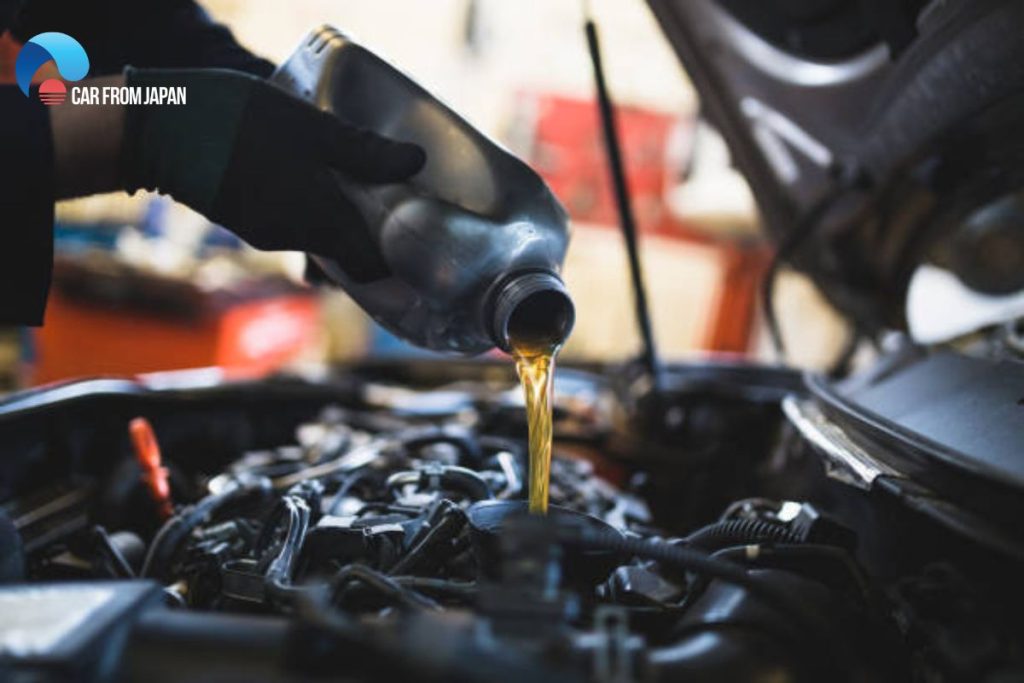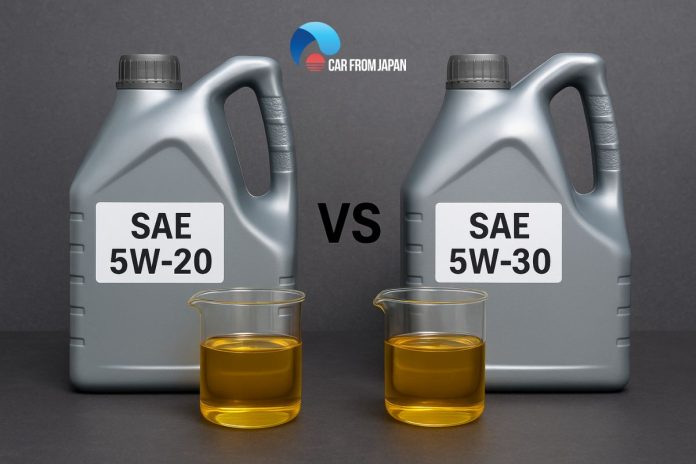On the market today, there are many different types of automotive oil with specific features suitable for each vehicle model. Knowing the product parameters will help you choose the right lubricant for your car. In this article, we will touch on the 5W20 and 5W30 discussions. Both these synthetic oils attract car enthusiasts as they sometimes are in trouble understanding the difference between 5W20 and 5W30 to determine which oil is the best option for their car.
Contents
Something You Need To Know About 5W20 And 5W30
Now, to get to the root of the problem, you have to know the basic things about these oils. Engine oil is a critical fluid for your vehicle, with its main role being the lubrication of moving parts and other functions, including cleaning, preventing heat buildup, and corrosion in your engine.
And one thing you may already know, there are two types of engine oils. These are synthetic oils and mineral oils. The former consists of artificially made chemical compounds, while the latter comes from natural sources.
However, synthetic oils are the most preferred as they function well in extreme temperatures. It’s also the reason why 5W20 and 5W30 have become common; they are both synthetic oils and work well in a wide range of engines.
We are sure that one standout difference you’ll notice is their naming: 5W20 and 5W30. The “W” denotes “winter,” meaning that the two oils are ideal for use in cold temperatures. The two numbers refer to their viscosity in different conditions. The first number (5W or 10W) is the viscosity at cold temperatures. The smaller this indicator, the more flexible the oil will be at low temperatures.
Therefore, 5W oil will thin and flow faster than 10W oil in cold weather conditions. In other words, 5w20 and 5w30 oils can help the car start cold faster than 10w30 oil. The following letter (W20 or W30) is the viscosity at the operating temperature. The number and letter arrangement is per SAE grade standards, or the Society of Automotive Engineers, which grades oils according to their thickness.

What’s The Difference Between 5w20 And 5w30?
Let’s compare the differences between these two oils:
The viscosity
Looking at the formula (name) of these two engine oils, we can see the only difference is in the viscosity of W30 and W20. It is the viscosity index corresponding to the viscosity of the oil. The higher this indicator, the density of the oil, and the slower the flow rate. So the question is, “Is 5W20 thicker than 5W30?” “No” is our answer.
Therefore, 5W-20 oil is less viscous and more liquid, and 5W-30 is thicker due to its higher viscosity index, so this oil will flow slowly compared to the 5W20 due to more friction. If comparing two oils, the 5W30 will be denser and have better wear resistance than the 5W20.
Operating temperature.
Lubricants have properties that change with temperature, thinning at high temperatures and thickening at low temperatures. Since 5W30 has a higher viscosity, this oil will perform better at high temperatures. While 5W20 will be more optimal in cold weather.
Besides, if your car often drives long routes, you should choose engine oil with high viscosity (5W30) because when operating over long distances, the engine will be hot, and the thick oil will be diluted at this time.
Do not choose thin oil because it will cause the phenomenon of “overheating”. In case your car drives frequently in the city, it is recommended to choose a dilute oil (5W20) so that the car can be restarted easily when stopping or shutting down many times before the traffic light.
Gas mileage
Oil viscosity is an important factor that affects the fuel consumption of an engine. Compared to 5W30, 5W20 is said to be more fuel-efficient due to its lower viscosity. 5W30 oil has a higher viscosity, which causes large hydrodynamic resistance.
High viscosity makes the mobility of the oil element poor, and the pump takes more time to push the oil to the parts that need lubrication. This phenomenon can cause damage to the engine, especially in cold climates when starting your vehicle. Choosing the right viscosity at each operating condition will minimize overall engine friction and reduce fuel consumption. However, in terms of fuel economy, low-viscosity oil will save more fuel.
5W20 vs 5W30: Which Oil Is Better For Your Car Engine?
Each engine oil will be suitable for a particular vehicle type and climate in your living area. Between 5W20 and 5W30, there is no better or best oil for your vehicle, but only the most suitable oil that has been recommended by the manufacturer. Many manufacturers recommend that customers use 5W-20 oil to meet the CAFE standard (Corporate Average Fuel Economy) required by the US federal government.
For better fuel economy, it is recommended to use engine oil of a viscosity grade SAE-5W20 (API SM/ILSACGF-4). Besides that advantage, there is another thing that many people think is a disadvantage, because the viscosity of the 5W20 oil is lower, so it can cause more wear and tear to the locomotive, below the high heat and stressful working conditions in the engine.

Many experts believe that currently, low-viscosity oils (5W20) are gradually becoming popular. The latest engines are built with tighter tolerances than older engines. In addition, many new engines use variable valves to improve performance and reduce emissions.
Thinner oil will flow through component gaps more quickly and actuate the variable valve more easily. On the other hand, thin oil also makes the car less fuel-consuming and helps protect the environment better.
Can I Use 5W30 Instead Of 5W20?
Many drivers use the 5W20 in their car to switch over to using 5W30, so is it ok to use 5W20 instead of 5W30 and vice versa? It can be seen that the 5W20 and 5W30 have the same operating temperature (same design of viscosity in the winter), but at a higher temperature, the 5W30 is a bit thicker and protects your engine better because it will have a different weight in the warm weather.
Some car enthusiasts believed that both 5W20 and 5W30 are in the same temperature range, meaning that both oils are interchangeable. Yes, you can do it in some emergencies! But we don’t recommend using 5W30 (or any other oil weight) instead of 5W20 in your car if the manufacturer’s manual specifies the use of 5W20 for the vehicle, because even the slightest difference in viscosity can affect the engine performance.
If the vehicle manual recommends using an oil with a viscosity suitable for hotter climates and extended duty. Now you can completely use 5W30 in place of 5W20. If no suitable oil is available to replace the 5W20, using another oil may void the warranty of certain parts of your vehicle (the powertrain system).
We want to affirm once again that there will be no improvement in your car’s performance if you use different oils or mix them in your car engine, which can cause the engine to wear out faster. Make sure that you use the recommended engine oil for your car to ensure the long lifespan of the engine components.
FAQs
Is 5W20 better than 5w30 in hot weather?
5W30 is generally better than 5W20 in hot weather. The second number (the “30” in 5W30) represents the oil’s thickness once the engine is fully warmed up. The thicker 5W30 oil provides a stronger, more protective film over your engine’s moving parts, which is especially important in high heat. While 5W20 is great for fuel economy, it can become too thin in extreme temperatures.
Is 5W20 good for high mileage?
Generally, you should continue using the 5W20 oil recommended by your car’s manufacturer, even for high mileage. However, as engines get older, they can sometimes start to burn a little oil or become noisy.
In these specific cases, many mechanics will suggest switching to a slightly thicker oil, like 5W30, or using a dedicated “High Mileage” formula. Thicker oil can do a better job of cushioning worn parts and sealing small gaps, helping to reduce oil consumption. But if your engine is running fine, there’s no reason to switch from the recommended 5W20.
What temperature is 5w30 good for?
5W30 is one of the most versatile engine oils, designed to handle a very wide range of temperatures. The “5W” means it flows easily in the cold, providing excellent protection during engine startup in weather as cold as -22°F (-30°C). The “30” means it’s thick enough to protect your engine’s internal parts even in very hot summer conditions, well over 100°F (38°C). This huge operating range is why it’s the recommended oil for a massive number of vehicles in almost every climate.
Final Thoughts
With the thought that 5W20 and 5W30 have the same effect, many drivers have chosen the wrong type of oil for their car’s engine. This mistake has caused many bad effects, such as increased fuel consumption, reduced engine lifespan, and worse, can cause wear and damage to engine parts. With our analysis of the difference between 5w20 and 5w30, hopefully, you will choose the right engine oil for your car.



